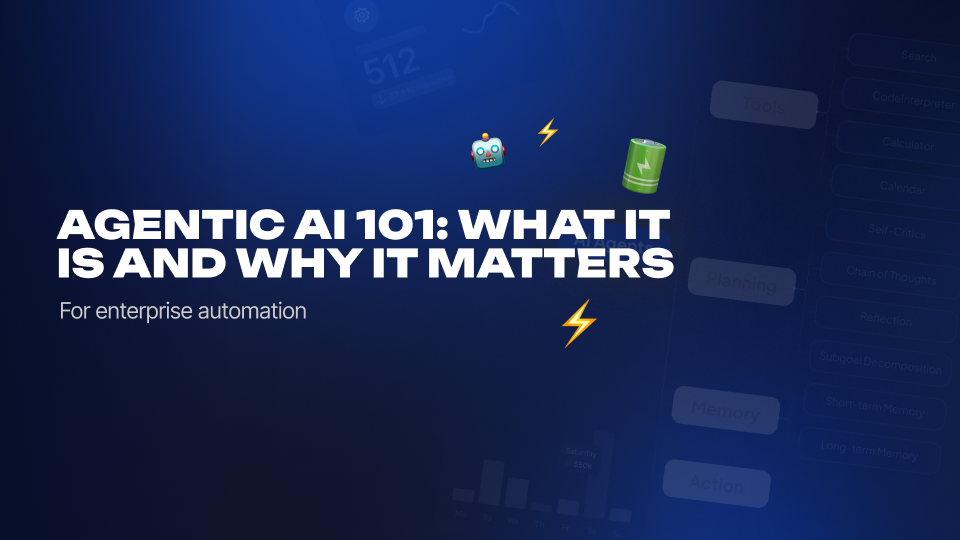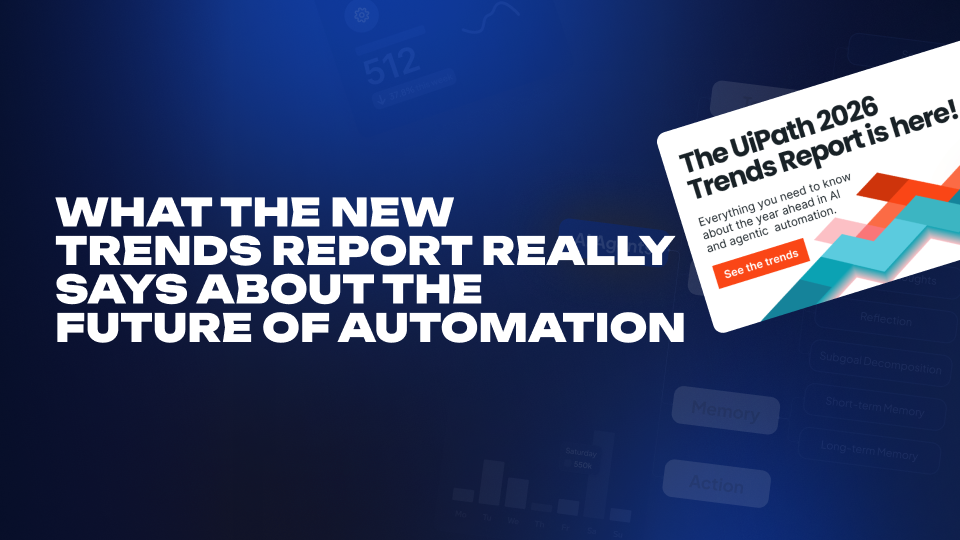
Agentic AI 101: What It Is and Why It Matters for Enterprise Automation
Let's face it. For all the talk about automation saving us time, the reality often feels like a paradox. We build bots to streamline workflows, only to watch our teams spend more time on maintenance than on innovation. One tiny change to a data field, and a whole process comes crashing down.
That frustrating, expensive cycle is about to end.
This is the exact problem Agentic AI solves.
What Is Agentic AI, Really?
Agentic AI refers to autonomous systems (“agents”) that pursue goals without needing exact instructions for every step. Unlike traditional bots (RPA) that require a strict sequence of triggers and rules, agents can reason, plan, and act across tools and systems.
At a technical level, agentic systems often:
- Accept a high-level goal
- Break it into subtasks
- Choose the right tools (APIs, bots, functions) to complete each
- Evaluate outcomes and iterate as needed
One of the biggest benefits of agentic AI is that it's automation that thinks a few steps ahead – not just follows a playbook.
How Agentic Systems Differ from Traditional Automation

Most enterprise RPA deployments today are reactive: something breaks, someone investigates. Agentic systems aim to flip that by enabling self-diagnosis and resolution – before the ticket is even raised.
Why It Matters If You Run a Team or a Process
Agentic AI isn’t just a developer topic. If you’re responsible for uptime, SLA compliance, or team efficiency, you’re likely running into the same blockers again and again:
- Business users can't self-serve — they need IT to update automations
- Bots break when input formats or systems change
- Your team spends more time maintaining automations than building new ones
Agentic systems reduce the need for human babysitting. And when paired with solid observability and orchestration, they can actually start delivering on the original promise of automation: saving time, not creating more work.
What People Are Actually Doing With It
We’re seeing agentic approaches used in:
- Automating L0/L1 support ticket resolution
- Connecting disparate bots into multi-step, dynamic workflows
- Monitoring processes and taking corrective action when failures occur
These aren’t hypothetical – they’re already in production in tech-forward enterprises.
Where Pointee Fits
Automation is only as good as the ecosystem around it. If you want it to deliver, you need the right observability and orchestration tools in place.
Our platform helps you:
- Detect and resolve failures in real time
- Monitor agentic and non-agentic automations from one place
- Give business teams visibility into what’s working (and what’s not)
Bottom Line
Agentic AI isn't a silver bullet. It won't magically fix broken workflows. But it will become a competitive advantage for enterprise teams that are serious about resilience, efficiency, and real automation ROI.
Want to see how Pointee helps automation teams prepare for what’s next? Book a demo.









